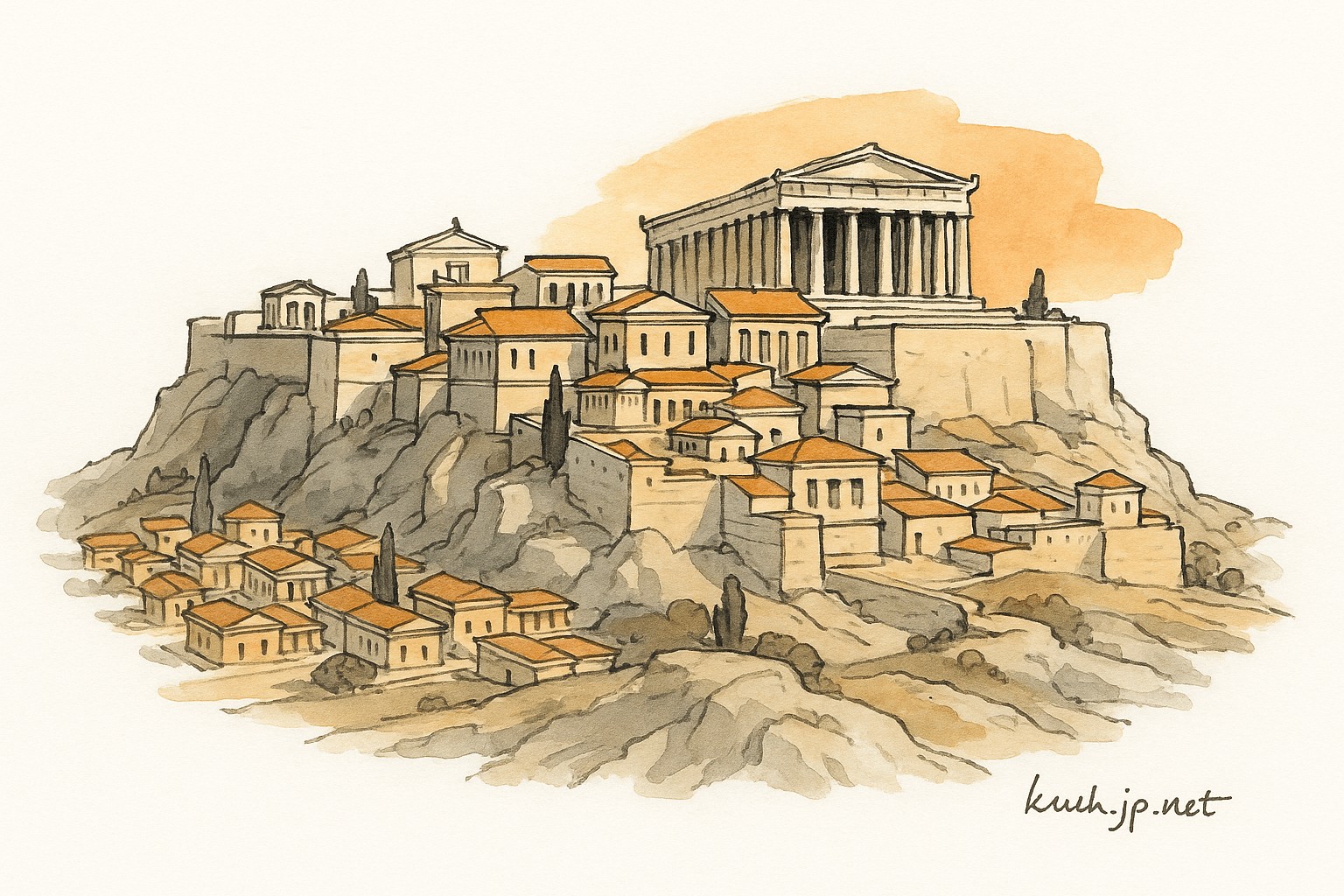
Perched high above the modern metropolis of Athens, the Porch of the Caryatids greets you like a timeless sentinel. In this photograph, taken at the edge of the Acropolis plateau, six graceful female figures—known as Caryatids—stand in silent vigil, supporting the weight of the Erechtheion’s ancient entablature on their heads. Behind them, the sprawling city unfolds, a tapestry of whitewashed buildings climbing the foothills of Mount Lycabettus. Above, a restless sky churns with slow-moving clouds, lending the scene both drama and a quiet poetry. This image is more than stone and skyline—it’s a dialogue between past and present, between art and nature, between human aspiration and the inevitability of time.
A Moment Suspended in Stone

When you first gaze at the Caryatids, what strikes you is their stillness. Despite the centuries they’ve borne witness—earthquakes, wars, rebuildings—their expressions remain serenely unreadable. Draped in flowing robes that cascade in perfect vertical folds, each figure embodies an ideal of feminine grace as conceived in the late fifth century B.C. They are not merely columns, but living presences frozen in a moment of quiet dignity. Notice how the play of light and shadow across their bodies gives the marble life: the subtle swelling of a hip, the gentle tilt of a head, the barely perceptible shift in weight from one leg to the other. In this instant, captured by the camera, you see both the artistry of the ancient sculptor and the inscrutable beauty of stone.
The Erechtheion: Sacred Complexity

Unlike the straightforward symmetry of the Parthenon, the Erechtheion is a building of contrasts—rectilinear on one side, asymmetrical on the other; Ionic in style, yet imbued with Doric sobriety in its austerity. It was here, legend tells us, that Poseidon and Athena battled for the patronage of Athens: his trident strike producing a salt spring, her gift revealing the first olive tree. Pilgrims in antiquity would have entered a space alive with competing shrines: altars to Hephaestus, shrines to ancient kings, the remains of the sacred olive. The Caryatid Porch occupied a liminal zone between the human and the divine, where architecture became ritual and every stone carried a story.
A Dialogue with Modernity
In the distance, the sprawl of Athens feels almost suffocating. Narrow streets, apartment blocks, satellite dishes—yet against this human-made jumble, the ancient columns seem to whisper of a different order. Here, geometry and proportion were paramount; here, skill and faith gave birth to buildings meant to last a thousand lifetimes. Today’s glass-and-steel towers may reach higher, but can they match the grace of a marble figure who has stood unmoved for 2,500 years? The clouds overhead, roiling in shades of slate and silver, remind us that nature remains Athens’s ultimate sculptor—weathering, eroding, and yet framing these monuments in ever-shifting light.
Time as Companion
Standing before the Caryatids, you can’t help but think about your own place in the flow of history. These figures have seen empires rise and fall, emperors convert gods, armies march and retreat, tourists snap selfies, and yet—they endure. There is consolation in their permanence and a challenge in their perfection. How will the works of our own age be remembered? Which of our creations will still speak to someone two millennia hence? This photograph captures more than a building: it captures the human urge to reach beyond the moment, to etch something lasting into the world.
Why Visit—and Why Remember
Whether you’re an art historian, an architect, or simply a curious traveler, the Erechtheion’s Porch of the Caryatids offers a lesson in beauty, balance, and resilience. It reminds us that architecture can be both functional and poetic, that every column can tell a story, and that the past is not a distant echo but a living presence under our feet. So next time you find yourself gazing at a skyline—be it Athens, New York, or Shanghai—ask yourself: which figures in my own world will stand the test of time?
In this single frame—a marriage of stone, sky, and city—we find a microcosm of human achievement. The Caryatids may stand still, but their silent vigil inspires us to move forward: to build, to create, and to leave behind something as enduring as marble.




